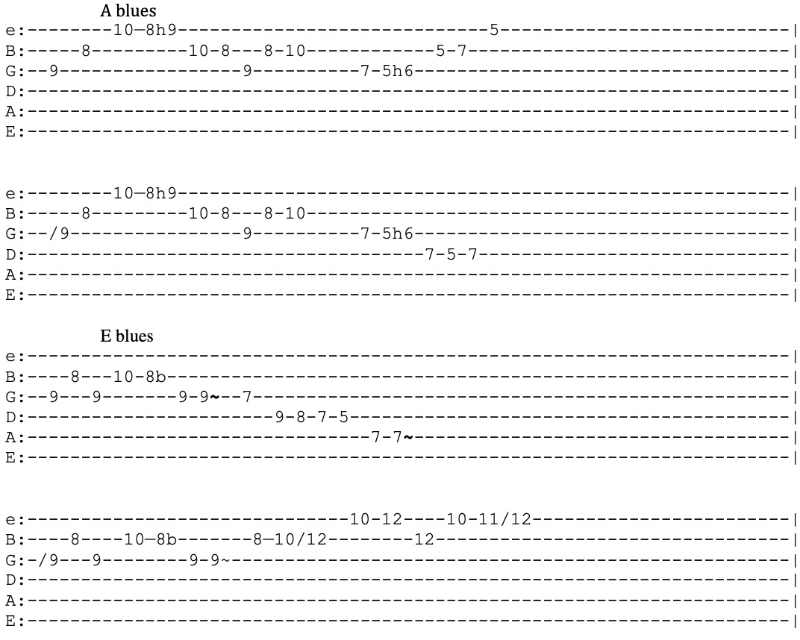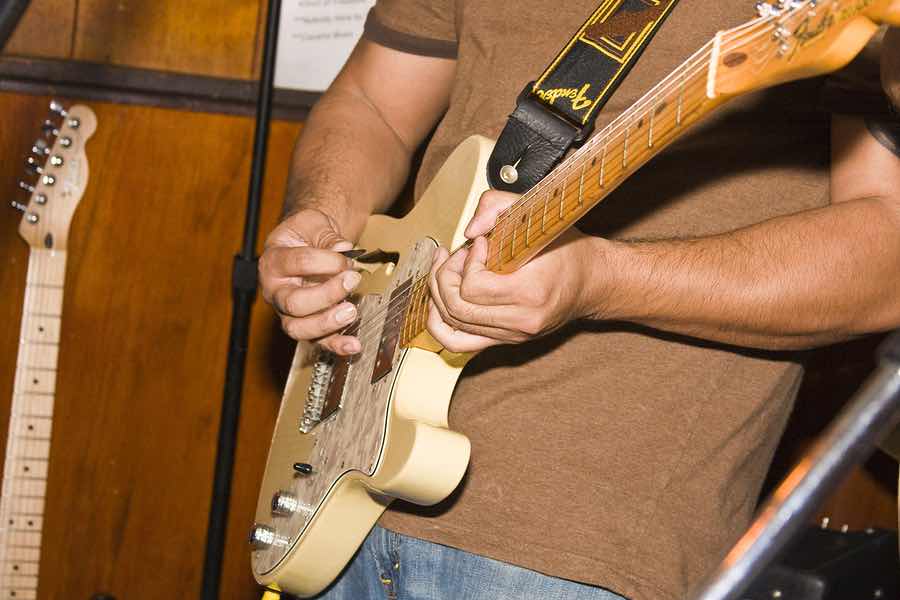Hi folks, I hope you have a beautiful summer! It’s a great time to play guitar in the backyard, on the beach or on vacation. There’s always a time and place to practice.
Today we’re going to learn two beautiful blues licks in the key of A and in the key of E that are both suitable for beginners and intermediate. You can see blues licks as the words and sentences that make up your story line. By learning blues licks you create the skills and vocabulary for your soloing and improvisation. Let’s learn some blues language!
2 Beautiful Blues Licks for Beginners and Intermediate
We start with a blues lick in the key of A with the first couple of notes from the A minor pentatonic scale position 2 (D-shape) and the last 6 notes from position 1 (E-shape). We also added the major 3rd to give you that overall happy blues sound.
The second blues lick is in the key of E starting with notes derived the E minor pentatonic scale position 4 (A-shape) and then rolls down to position 3 (C-shape), then goes back using the same notes from position 4 (A-shape) and then goes higher up the fretboard to position 5 (G-shape).

If you want to learn more about licks, scales and positions / shapes, soloing and improvisation check out 50CoolBluesLicks.com
📨 Hi there, Join Guitarhabits and receive Free Quality Guitar Video Lessons, Top Content, Tips, Tricks, Resources & (bi)Weekly Guitarhabits’ Backpack Email full of good stuff. 🎸🎁
SIGN UP HERE: https://www.guitarhabits.com/sign-up-guitarhabits/
Support my work here: https://www.guitarhabits.com/donate/
 The minor pentatonic scale is the most used scale for soloing and it is used in a wide variety of music styles like pop, rock, country, metal, blues and more. It’s a great scale because it’s fairly easy to play which makes it a perfect beginner scale for soloing, but it also has the functionality to develop, expand, and improve your skills to high levels of advanced playing.
The minor pentatonic scale is the most used scale for soloing and it is used in a wide variety of music styles like pop, rock, country, metal, blues and more. It’s a great scale because it’s fairly easy to play which makes it a perfect beginner scale for soloing, but it also has the functionality to develop, expand, and improve your skills to high levels of advanced playing. The pentatonic scale is an awesome scale. It’s a fairly easy scale and it can be used for almost every style of music: blues, country, pop, rock and more.
The pentatonic scale is an awesome scale. It’s a fairly easy scale and it can be used for almost every style of music: blues, country, pop, rock and more. A double stop is when you play two notes at the same time, also called “dyads” (you might have heard of the more familiar term “triads” where you play three notes at the same time).
A double stop is when you play two notes at the same time, also called “dyads” (you might have heard of the more familiar term “triads” where you play three notes at the same time).